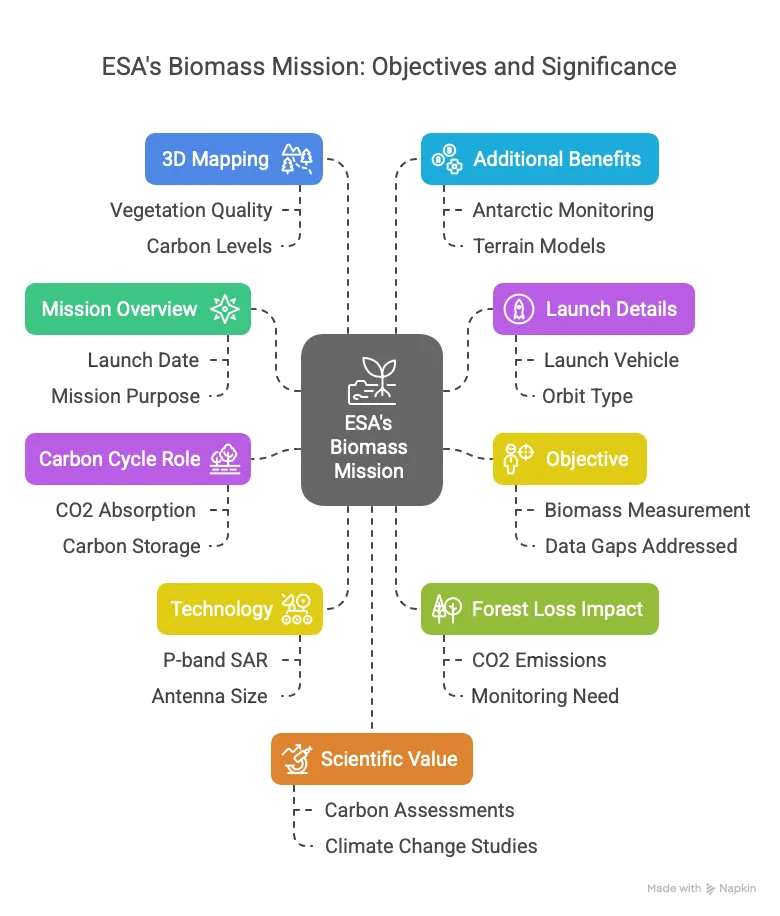UPSC
Indian Express Concise
Forest Biomass Monitoring: ESA’s Biomass Mission Simplified
Last Updated
8th April, 2025
Date Published
8th April, 2025
Share This Post With Someone


- Mission Overview: The European Space Agency (ESA) is launching the Biomass mission on April 29, 2025, to monitor global forest biomass from space, enhancing carbon cycle understanding.
- Launch Details: It will lift off via the Vega C rocket from French Guiana, entering a sun-synchronous orbit at 666 km altitude for consistent solar alignment.
- Objective: The mission aims to measure above-ground biomass—living mass in trees above soil—addressing gaps in forest height and carbon storage data.
- Carbon Cycle Role: Forests absorb 16 billion metric tonnes of CO2 annually, storing 861 gigatonnes of carbon, vital for climate regulation.
- Technology: It uses a P-band synthetic aperture radar (SAR) with a 70 cm wavelength, penetrating canopies to assess carbon in trunks and branches via a 12 m antenna.
- Forest Loss Impact: In 2023, 3.7 million hectares of tropical forests were lost, releasing 6% of global CO2 emissions, underscoring the need for accurate monitoring.
- 3D Mapping: The mission will create 3D forest images, from canopy to roots, to evaluate vegetation quality, diversity, and carbon levels.
- Additional Benefits: Beyond forests, it will monitor Antarctic ice sheet movements and generate terrain models under dense vegetation.
- Scientific Value: Data will refine carbon level assessments amid deforestation and rising CO2, aiding climate change studies.
- Global Relevance: As the first P-band SAR satellite, it offers unprecedented insights into forest health, critical for sustainable environmental policies.
Glossary
- Biomass: The total mass of living organisms, here referring to forest vegetation above ground.
- Carbon Cycle: The process by which carbon moves between the atmosphere, land, and oceans.
- Synthetic Aperture Radar (SAR): A radar imaging technique using wave reflections to map Earth’s surface.
- Sun-Synchronous Orbit: An orbit synchronized with the Sun, ensuring consistent lighting for observations.
- P-band: A long-wavelength radar frequency range (30-100 cm), ideal for penetrating dense forest canopies.
Link To The Original Article – https://indianexpress.com/article/explained/explained-sci-tech/esa-monitor-forests-biomass-9930561/